Finland and Norway’s heads of state at Nordic Response: “A historic day for many reasons”
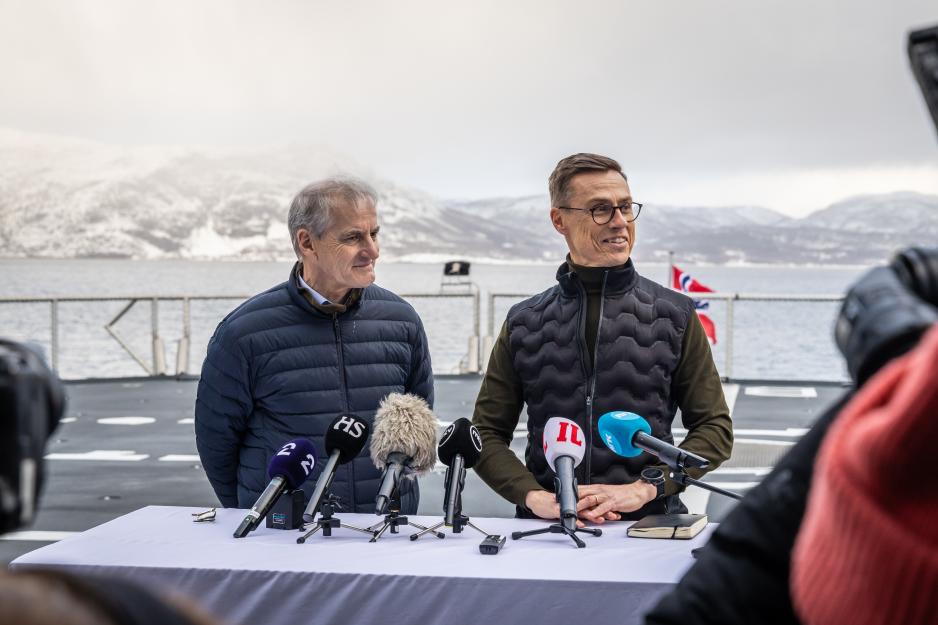
Sweden’s brand new NATO membership was highlighted by Norway’s PM and Finland’s president during their visit to the Nordic Response exercise in Northern Norway. This exercise and this visit are also events of historical importance, they said and heralded even stronger Nordic cooperation.
“There are several reasons we can use the term ‘historic’ today. The first and perhaps most important reason is perhaps that we just called and congratulated our good colleague and friend, Prime Minister Ulf Kristersson, on Sweden becoming a NATO member today.”
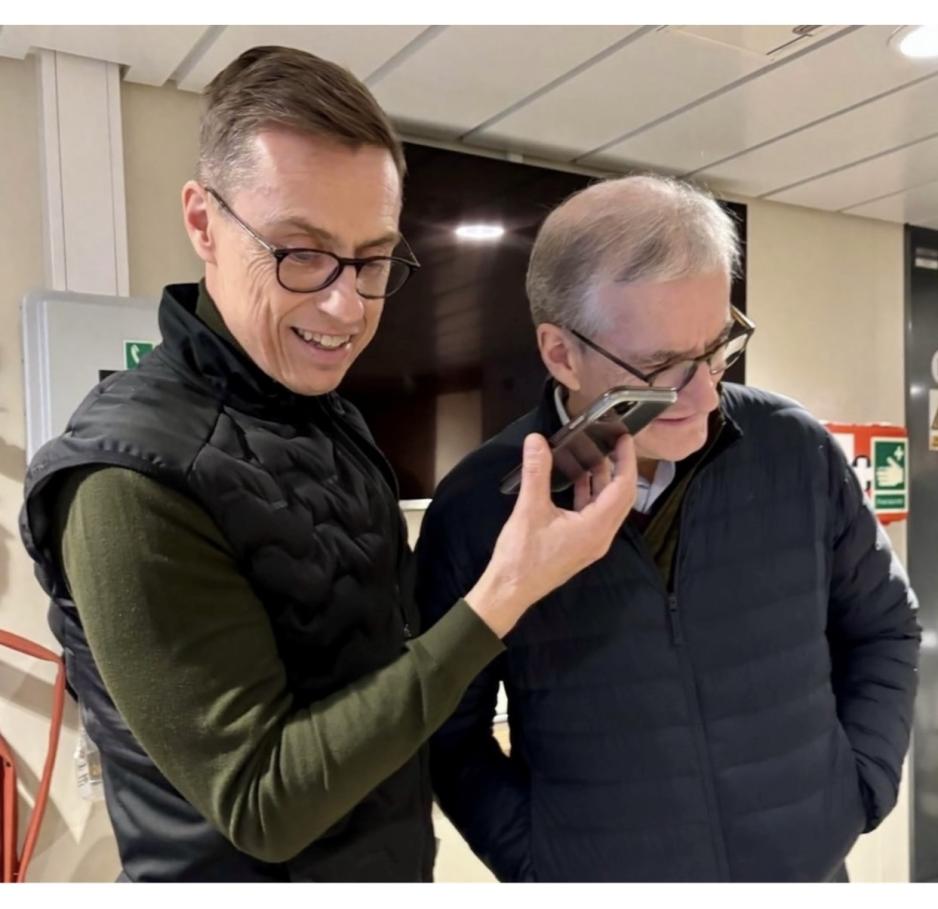
These words belong to Finland’s new president, Alexander Stubb, who on Thursday visited the Nordic Response exercise in the Alta area, Northern Norway, together with Norway’s PM Jonas Gahr Støre. Their press conference was broadcast by Finnish Yle.
The Swedish PM was supposed to be part of the visit in the North but was currently in Washington D.C. – where he handed over the necessary documents for NATO membership to American authorities this afternoon.
“All the Nordic countries being part of the same defense alliance is a historic event, and it feels right and safe. It strengthens the fraternal people in the North and our joint security,” Støre says.
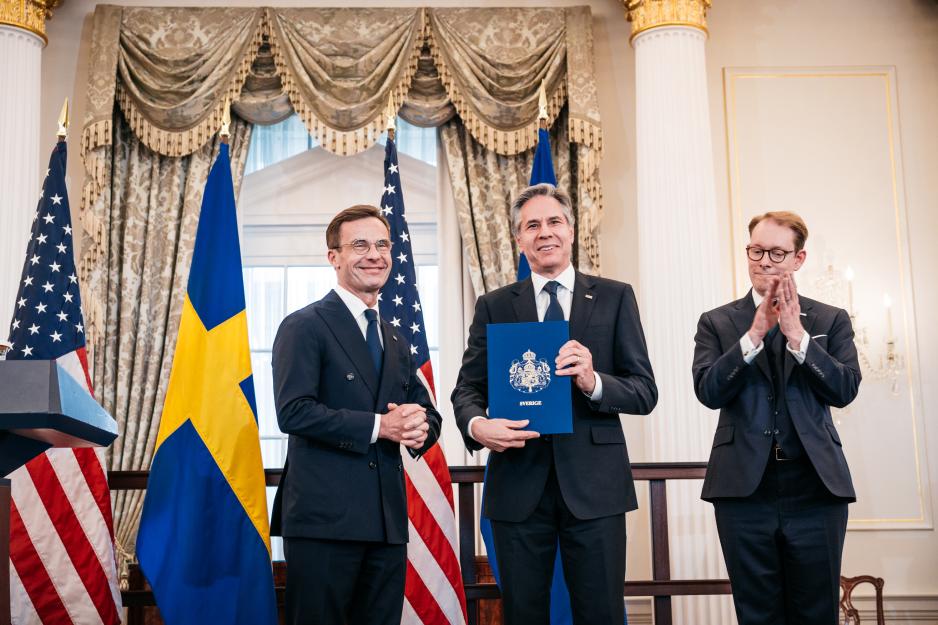
Several milestones
The historic resonance of this day is also linked to Finland – and now also Sweden – participating as NATO countries for the first time in a large-scale allied exercise, Støre and Stubb maintains.
This activity is also part of Steadfast Defender – NATO’s largest exercise since the Cold War, with 90,000 soldiers from all now 32 member states. 20,000 of these from 13 countries are training across the entire Cap of the North.
The shared framework is rehearsing a scenario in which the Atlantic Treaty Article 5 on collective defense is triggered.
In the North, the reception of allied forces and joint operations in the face of a fictitious invasion of Finnmark county, Northern Norway, is practiced. Around 4100 Finnish soldiers and 4500 Swedish soldiers are among the reinforcements.
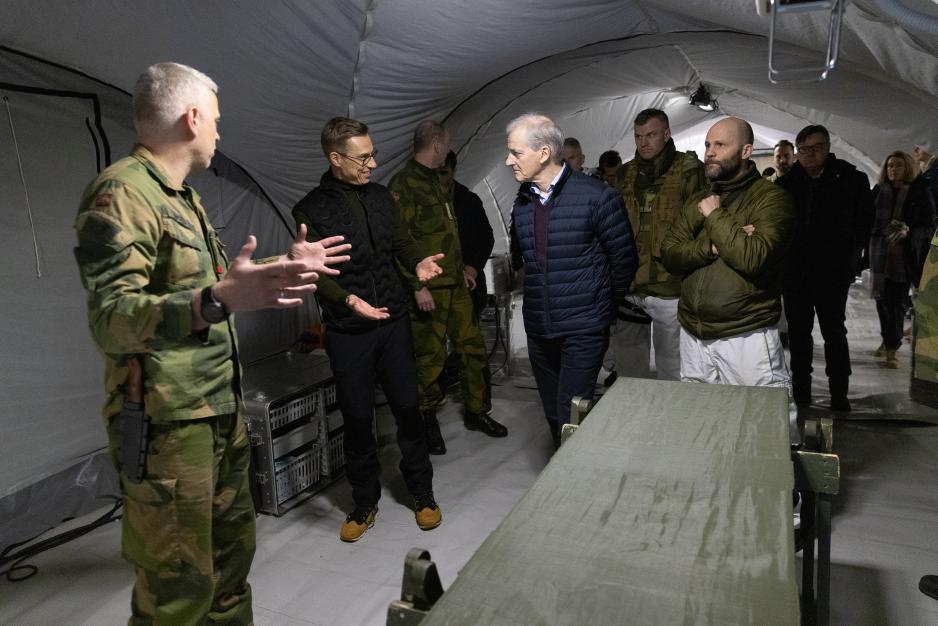
Close ties
“Nordic Response is Finland’s largest military exercise ever. It has been interesting and reassuring to observe the work we do together here with our allies – particularly with Norway and Sweden,” continues the president and the highest commander of the Finnish Armed Forces.
This is also Stubb’s first foreign visit after he took office as president on March 1.
“I am happy that Alexander Stubb chose to visit Norway as the first country. We have a close relationship. We are working closely on security policy and we exchange experiences on our neighborship with Russia, among other things. There is also great potential for increased cooperation regarding the green shift – not least in the North,” says PM Støre.
The meeting between the two, who were MFAs at the same time from 2008 to 2011, was marked by a celebratory atmosphere and a close friendship.
Yet their joint visit to the North was also framed by a grave security policy backdrop – Russia’s war against Ukraine and steadily deteriorating relations with the West.
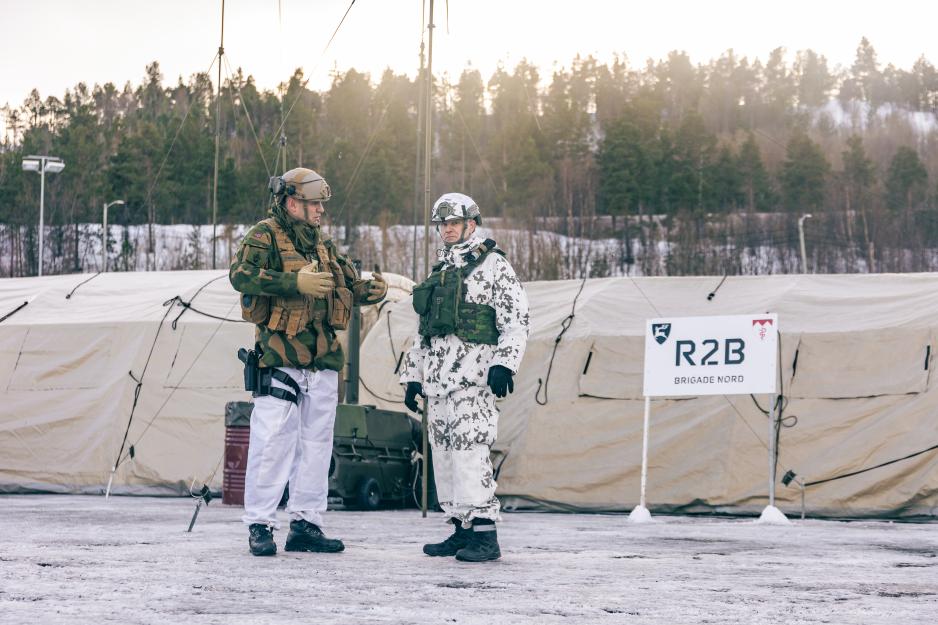
Message to Russia
“It truly looks like Norway, Finland, and other countries are training here to counter a Russian attack. Is it possible that Russia would attack Norway or Finland in five years, for example?” asks the Finnish newspaper Iltalehti during the press conference.
“This exercise is based on NATO’s Article 5, and it is Finland’s first participation in such an exercise as an allied. The exercise is also meant to be deterring. In other words, we are sending a certain message to Russia that we have the capacity to react if Russian forces were to attack. One must always prepare for all scenarios, but I still consider such an attack scenario unlikely. I do not think that will happen,” Stubb answers.
“I completely agree with the president. This exercise showcases that we can ensure our security through our own efforts and cooperation with other countries. But we are in a situation colored by how Russia, at an earlier time, mobilized 150,000 soldiers and attacked another country,” Støre says and continues:
“We currently do not see a direct military threat toward Norway or the Nordics. At the same time, if we are to be responsible and ensure future security, we must have the ability and capacity to co-organize our defense forces as we are showing today.”
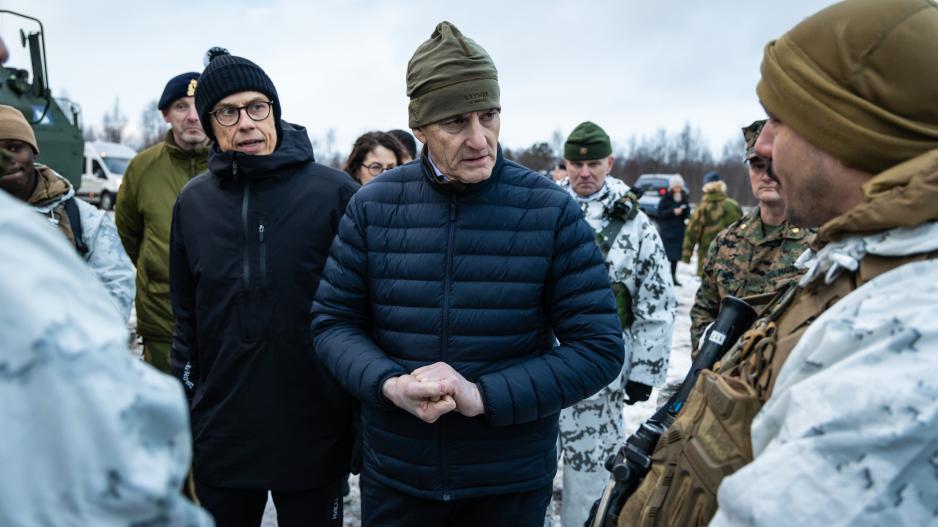
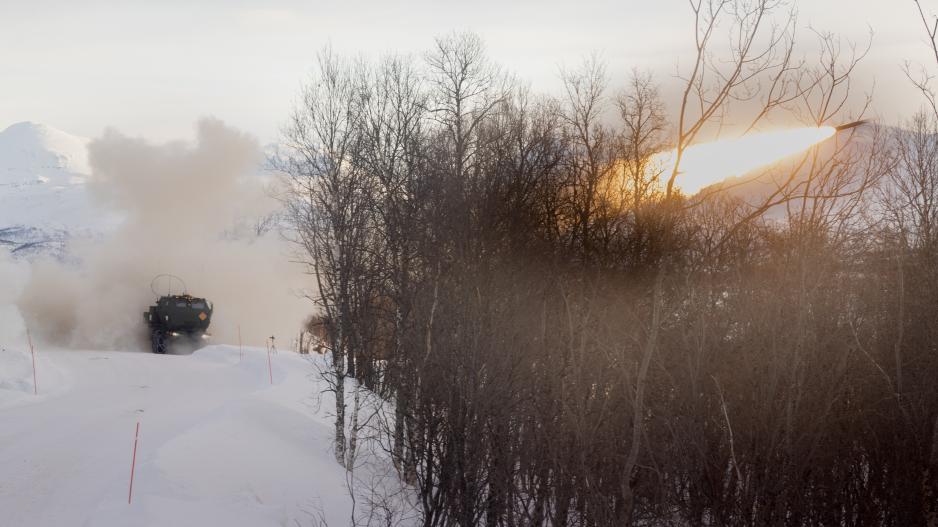
Response to Russian statements
The Secretary of the Security Council of Russia, Nikolai Patrushev, maintains that with the Steadfast Defender exercise, NATO is practicing an armed confrontation with Russia, reports the Russian state-controlled news agency Ria Novosti.
The Nordic Response exercise is “demonstrative and provocative,” says Russia’s Vice MFA Aleksander Grushko, according to another Russian state-controlled news agency, TASS.
In the face of such statements, the two Nordic heads of state say the following:
“The response is straightforward: NATO is not a threat to anyone, and the Nordic countries are not threatening any countries. We have the right to manage our defenses. We have a neighbor who has launched a full-scale attack against another neighbor. As responsible countries ensuring our security, we take realistic steps to be confident in our defense – with our own capabilities, but also our allies’,” Støre underlines.
“When you join an alliance, it is imperative to participate in military exercises to improve collaboration between forces. The basic idea is that we have soldiers without frontiers. This exercise is not directed toward anyone – it is for our own security, and it should be seen as such,” Stubb points out.
Announcing deeper cooperation
Aboard Norway’s new coast guard vessel KV Bjørnøya, the two heads of state had bilateral conversations – also in light of trilateral cooperation with Sweden – and they have an announcement regarding closer interaction.
“I appreciate that the newly elected Finnish president, like his predecessor, strongly focuses on how we in the North – in what I call the Northern Nordic region – can cooperate for joint security. Today, we agreed that we will have a Norwegian-Swedish-Finnish meeting before NATO’s summit in Washington, D.C., in July to deepen the political conversation about what opportunities this opens up for cooperation between our countries,” says Støre.
“In more detail, Jonas has invited Ulf Kristersson and me to Norway. Such a meeting tradition was initiated in Harpsund, Sweden, last year. Later on, I will invite my colleagues to my summer residence in Gullranda, Finland, ahead of the NATO summit in 2025,” adds Stubb.
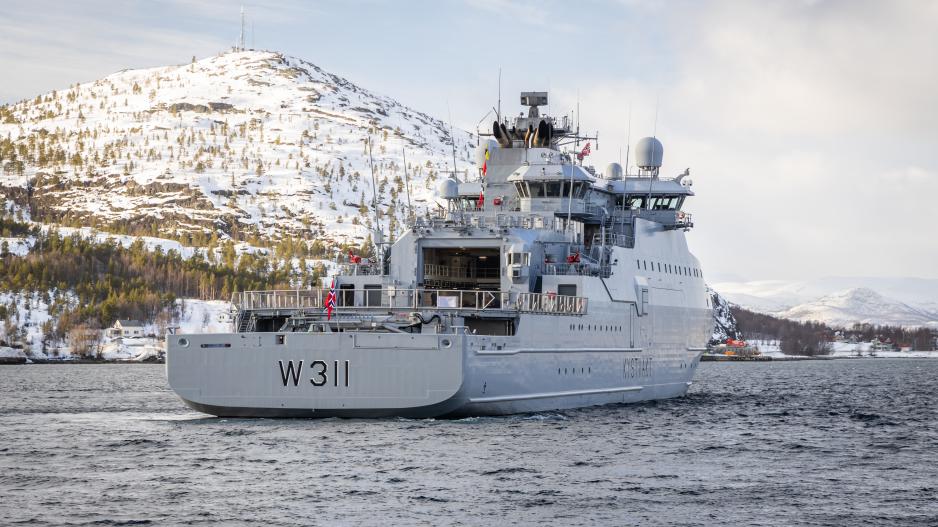
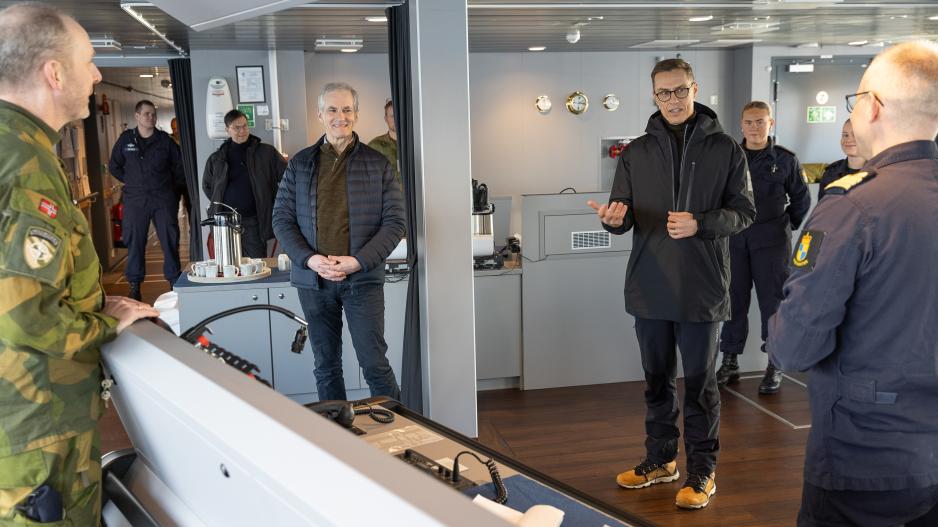
Democratic dimension
Støre points to the opportunity for deeper Nordic operative cooperation now that the three NATO countries will have “the same standards and routines, as well as the same principles for joint exercises.”
“I also want to emphasize that NATO is a political and military alliance, and the meeting in the North Atlantic Council [the alliance’s principal body, ed. note] will now have a greater democratic element with Finland and Sweden around the table. The conversations in NATO are conducted between allied countries with various backgrounds. I believe important principles for us in the Nordic region will be strengthened with the Swedes and Finns as new conversational partners in this context,” says Støre.
By extension, Stubb adds the following:
“The starting point is that we three Nordic countries produce security – we do not consume security. To Norwegian ears, it might be good to hear that we have around 900,000 men and women with military educations – and 280,000 men and women who can be mobilized quite quickly in the event of a war. Our air defense has 62 F/A-18 Hornet fighters, and we have ordered 64 F-35 fighters. At the same time, we also have Northern Europe’s largest artillery force. This is just some examples of our capacities in today’s situation,” notes the president and continues:
“Finland will, together with Sweden and Norway, add value to NATO – and the exercise now taking place in the North is a prime example of that.”
Question of command
President Stubb also addressed whether Finland and Sweden, like Norway, will be designated to NATO’s new Joint Force Command in Norfolk, USA.
“For us, the matter of JFC Norfolk and its organization is not a regional policy matter but a military policy and strategic matter. We work with our allies, particularly our Nordic friends, to find optimal solutions for protecting this area within the alliance. A final decision will be made at the summer summit in Washington, D.C. In that regard, we could say that we have entered NATO at a good time,” he smiles.
An important objective for Nordic Response and other training within Steadfast Defender is to test NATO’s new defense plans, adopted at the previous summit. During the exercise in the North, Norway’s defense reports to JFC Norfolk but returns to JFC Brunssum in the Netherlands afterward while awaiting the new command’s build-up.
“The most important thing for Norway now is that JFC is staffed as quickly as possible and that we can gather the whole Nordic region, among others, under the same command and regional defense plans, in addition to the associated underlying command structure. Norway already has a lot of personnel in Norfolk, yet this will be significantly increased in the coming years,” said Norway’s MoD Bjørn Arild Gram (Center) in a speech at the Oslo Military Society in February.
High North News is an independent newspaper published by the High North Center at Nord University in Bodø, Norway.